Hey there!
Thank you for checking out the Introduction to Sled Training (ST) for Athletes. This introduction will not be a comprehensive guide, but a quick overview of some of the things that are possible with ST. Now listen up...
No one is responsible or liable for your actions but you. If you choose to follow someone else's advice or use their ideas in some way in your life, and it does not work for you, or you get hurt in the process, it is no one's problem but your own. You have the choice to do or not do. With that being said, I give you my word that I would never say or ask you to do anything that might be harmful. If I think there may be an issue to watch out for, I will try to announce it. There is no substitute for good old fashioned common sense. There are some aspects of ST that will be easy, while some things will be hard. Not every exercise is suitable for everyone, especially not right away. Make a personal evaluation of your current ability and situation (injuries, strength level, training experience) and use this information to grow yourself, not destroy yourself.
There are four basic areas that I want to address with ST.
Thank you for checking out the Introduction to Sled Training (ST) for Athletes. This introduction will not be a comprehensive guide, but a quick overview of some of the things that are possible with ST. Now listen up...
No one is responsible or liable for your actions but you. If you choose to follow someone else's advice or use their ideas in some way in your life, and it does not work for you, or you get hurt in the process, it is no one's problem but your own. You have the choice to do or not do. With that being said, I give you my word that I would never say or ask you to do anything that might be harmful. If I think there may be an issue to watch out for, I will try to announce it. There is no substitute for good old fashioned common sense. There are some aspects of ST that will be easy, while some things will be hard. Not every exercise is suitable for everyone, especially not right away. Make a personal evaluation of your current ability and situation (injuries, strength level, training experience) and use this information to grow yourself, not destroy yourself.
There are four basic areas that I want to address with ST.
- Mobility
- Stability
- Strength
- Conditioning
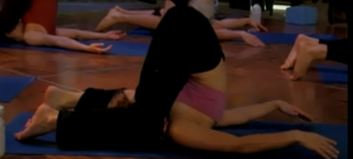
Keep in mind that ST is not yoga class and we are not trying to touch our toes behind our ears, we will leave that to our girlfriends. We want to work out some of the kinks from our hard and intense training prior to ST and better prepare ourselves for our next intense training session. The freedom of motion that ST offers is ideal for symmetry and athletic balance. I believe that ST is one of the overall best ways to condition your body physically, rehab, prehab and recover between intense training sessions. ST in itself can be very intense, depending on how you use it, but one of my favorite ways to use ST is for the recovery aspect. Using ST for recovery is no secret, guys like Louie Simmons and his followers have been doing it a long time, and they are some strong dudes with lots of aches and pains that come with the territory of training hard and heavy. Incorporating ST in to their training has helped them get back to their heavier training more frequently, and it can help you do what you like doing more frequently too.
ST is very versatile and can be done anywhere you can find a road without too much traffic, a field or beach depending on the kind of sled you have. A sled costs very little money to make, a little more to buy, or can be free if you are creative and have a few items that fit the bill. There is little to no excuse for anyone to not be able to perform this type of training, as the equipment investment is minimal and the training time and environment is endless. With plenty of time and space to do your training, you will be able to learn and experiment with dozens of new exercises that can be performed to enhance your recovery, and general physical preparedness (GPP).
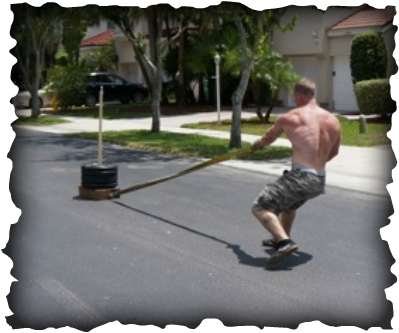
One of the issues with a lot of the current fitness systems these days is the desire to go very hard and intense. This is not a problem with someone who has adequate strength, mobile and stable joints and a balanced development. The problem arrises when athletes undergo very intense training when they are weak and unstable which very often results in injury from fatigue, poor posture and improper technique.
To combat this issue, ST offers myriad exercises that create substantial mobility and stability throughout the body which can make an athlete eventually perform more explosive movements, with higher intensity and increased volume with a lower risk of injury all while having much more fun doing it, due to better motor control and performance. Increased performance is always more fun.
In addition to the increased mobility and stability you will gain from regular and proper ST, there is a huge potential for strength gain, particularly if you are a novice trainee. There are different kinds of strength we will focus on as well. Basic strength is the foundation for all other athletic training. Increased strength while at least maintaining other aspects of your ability, such as flexibility, will almost always mean increased athleticism. Static strength is a major consideration and something that I feel a lot of athletes are missing today. It may seem a little boring at times because of what seems a lack of activity (simply holding a strong position for a period of time), but static strength is a wild beast that can make or break many situations for some athletes like wrestlers and grapplers, especially. The mental aspect of static strength training is unparalleled in my opinion. If you're not sure what I am talking about, just picture a gymnast holding a six second maltese cross on the rings...
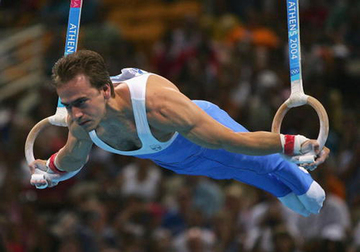
Pretty grueling to say the least. Notice the position of the athletes in the two photos on the rings and the sled drag. The body, arms and the straps are in a similar position, not identical of course, but pose a similar stress on the body, but to a lesser degree with ST depending on the weight. Most of us don't have the ability to hold such a high level static strength position on the rings, nor do we even have an idea where to start training for something like that. But with ST, we can very quickly and easily start with something on a much lower scale that suits our current abilities and build ourselves up accordingly.
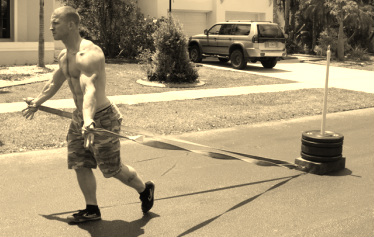
In addition to the several static strength positions we will use with ST, we have many different dynamic strength exercises including pushing, pulling, squatting, hinging, carrying and twisting variations to accompany them. Those six things cover the basics of human movement, and we can perform them ballistically to build speed and power, or we can perform them with a slow controlled tempo to develop strength endurance and hypertrophy. All of which are necessary for the well balanced athlete.
It is no secret that we want to train and exercise by doing the things we enjoy doing. I have a personal affinity for gymnastic training, but do not always have the ability to get on the rings in a gymnasium over a well cushioned and protective flooring system, as I am positive most of you do not have that type of access either. Nor do I have the ability to perform many of the more skillful movements that a top level gymnast could. But that does not mean I am limited to push ups and pull ups all the time. With ST I have plenty of variety, innovation and progression on my side. That isn't to say that you don't have the same options with basic gymnastic training, ST is just a different option.
My goal of presenting this ST manual is to show how you can use a simple sled to improve performance, enhance athleticism and feel much better by improving flexibility, joint mobility, various forms of strength from basic strength, static strength, dynamic strength, as well as energy system training.
ST is the ideal companion to kettlebell lifting, bodyweight training, and weight training in general. Much like bodyweight training, ST enables the athlete to move in virtually any and all planes of motion. The days of only performing sled sprints forward and backward as hard as possible, with the occasional lateral walk, are over. While they are great exercises, and they should not be lost, you are about to learn a ton of new exercises to enhance your athleticism and general health and well being far beyond your current state, without the need for any fancy equipment or much time or money at all. Not only will your legs get a blast of a workout, but you will get tons of new movements for upper body as well, which is not the norm with the way I see most ST being performed today.
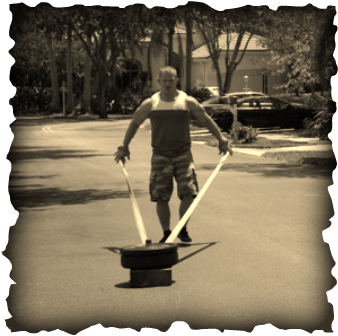
I like to see my athletes perform a wide variety of movements, for full balanced development. Not only my fitness clients, but my specialized athletes as well. I want to see balanced development from top to bottom, right to left and front to back. Without that balance, you are begging for an injury and will get derailed from playing time. Take a baseball pitcher for example. He is always throwing hard with the same arm, in the same repetitive motion (forward overhead throw) and regularly fatigues his shoulder in that motion. How often does he reverse the motion and pull his arm back? Not nearly as often. How about the other arm? It does not get the same throwing action. The problem is when he trains to throw harder and faster and mimics his throwing motion or works the muscles usually involved with his pitching and creates an even bigger imbalance instead of training the antagonist muscles which aren't being used as much and the muscles on the other side of the body. ST is not the only option to battle these issues, but it is a good one that anyone can use. ST is a great option to fix the ailments that specificity can bring to the intermediate and advanced athlete, as well as enhance GPP for the athlete as well.
While some of the exercises will closely resemble a specific movement pattern in a sport, it is not my intention to get an athlete to perform only that movement to enhance a particular skill. Take the "Slapshot" for instance. Many hockey players will love this one for obvious reasons, so they will go out and start training that movement over and over again, in hopes of improving their skill specific drills and rotational power for hockey. This isn't necessarily a bad thing unless the athlete performs the exercise in the same direction that he always performs the skill in practice and in games. So, if the athlete is a right handed and always takes his powerful slapshots in the same direction, ST allows him to train the muscles in the opposite direction and maintain or create balance in the core muscles without messing with his specific sporting technique. Since the athlete trains his drills so much in practice, I recommend he get 2-3 times the volume of ST in the opposite direction to create more balance and help keep him healthy. This holds true with most throwing and rotational based sports like baseball and golf. It is easy to see how regular practice with specific drills can create imbalances in the athlete, and ST can help fix those imbalances and improve performance and health in general.
I know what you're thinking, "Let's get on with the exercises!" The Complete Sled Training Manual for Athletes showcases dozens of exercises like the overhead walk, the slapshot, the Maltese walk, the Victorian walk, the waiter walk, The Hollow-Arch Tempo walk, as well as many more and explains the when, why, what for, how and who for all the variations and you'll be able to immediately incorporate these drills into your current training program to improve your ability and the performance of your athletes right away.
Thanks for checking out this intro to ST! There are dozens more variations coming your way in the complete ST manual for Athletes. Please keep an eye out and it will be available soon. Let me know if you have any questions or how this could benefit you by contacting me on facebook or email at
[email protected]
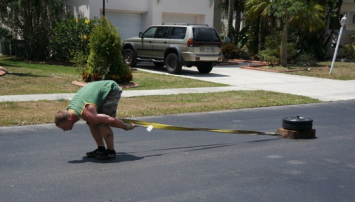
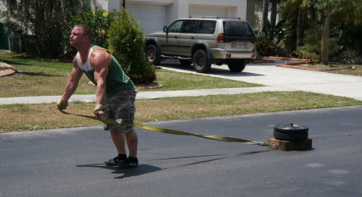
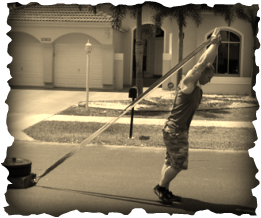
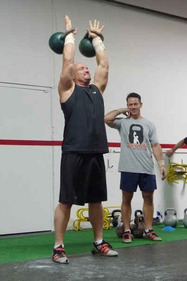
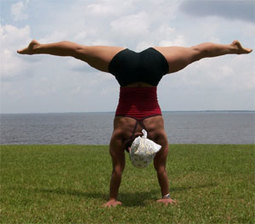
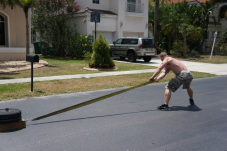
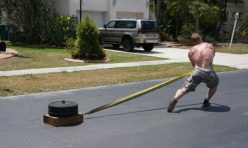
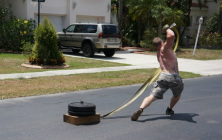
 RSS Feed
RSS Feed